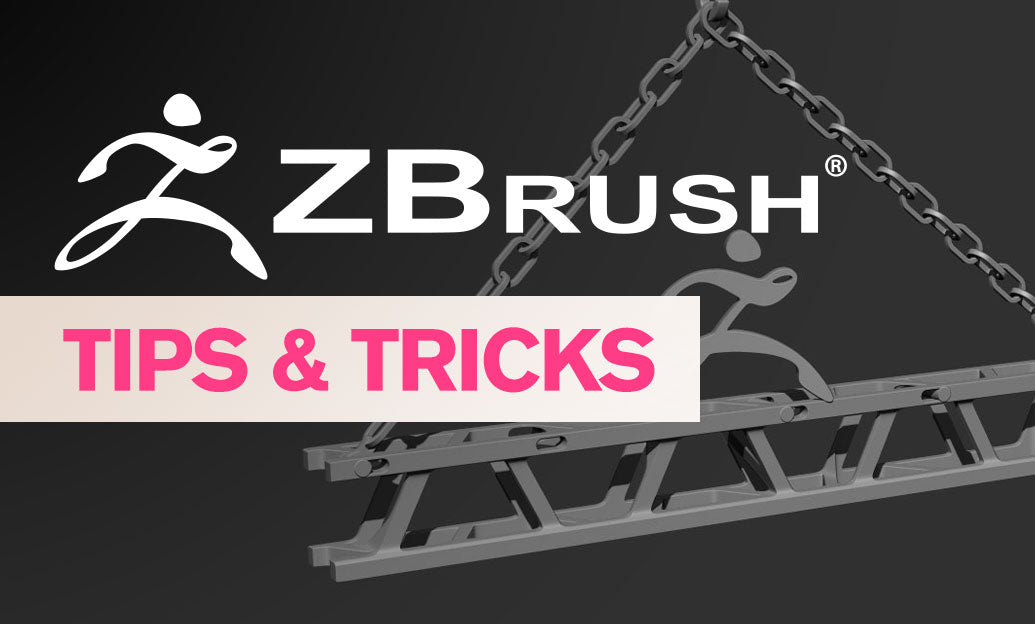Your Cart is Empty
Customer Testimonials
-
"Great customer service. The folks at Novedge were super helpful in navigating a somewhat complicated order including software upgrades and serial numbers in various stages of inactivity. They were friendly and helpful throughout the process.."
Ruben Ruckmark
"Quick & very helpful. We have been using Novedge for years and are very happy with their quick service when we need to make a purchase and excellent support resolving any issues."
Will Woodson
"Scott is the best. He reminds me about subscriptions dates, guides me in the correct direction for updates. He always responds promptly to me. He is literally the reason I continue to work with Novedge and will do so in the future."
Edward Mchugh
"Calvin Lok is “the man”. After my purchase of Sketchup 2021, he called me and provided step-by-step instructions to ease me through difficulties I was having with the setup of my new software."
Mike Borzage
ZBrush Tip: Enhancing Realism in ZBrush: Mastering Polypaint and Subsurface Scattering Techniques
July 26, 2024 2 min read

ZBrush is renowned for its robust sculpting and painting tools, enabling artists to bring their visions to life with incredible detail and realism. One of the key features that allow for such vibrant and lifelike results is Polypaint, and when combined with subsurface scattering techniques, the results can be truly stunning. Here are some insights into using these features effectively:
- Understanding Polypaint: Polypaint is ZBrush's vertex painting tool, which allows you to paint directly on a model's surface without the need for UV maps. It's perfect for adding color and texture to your sculpts.
- Maximize Your Model’s Resolution: Ensure your model has enough polygons to capture the finest details in your Polypaint. This might mean subdividing your mesh before painting.
- Subsurface Scattering (SSS): SSS is a shading model that simulates the light passing through translucent materials like skin. It can add a level of realism to your models, particularly when portraying organic materials.
- SSS in ZBrush: ZBrush offers SSS effects through its rendering system. To enable SSS, select a material that supports SSS and adjust its settings in the Material Palette.
- Consistency is Key: When painting, maintain a consistent light source and consider how subsurface scattering might affect color and luminosity across different parts of your model.
- Color Variation: For more realistic skin, use subtle color variations. Human skin contains a variety of hues, so mix in blues, greens, and yellows with your base skin tone in Polypaint.
- Layering: Use layers in Polypaint to separate different elements such as base colors, details, and textures. This approach offers flexibility, allowing adjustments to individual aspects without affecting the whole.
- Testing in Different Lighting: Regularly test your model’s appearance under various lighting conditions within ZBrush to ensure the consistency and effectiveness of the SSS and Polypaint.
- Polypaint to Texture: Once you're satisfied with your Polypaint, you can convert the vertex colors into a texture map to use in other applications or for rendering purposes.
- Refinement in Post: For final touches, consider exporting your render passes from ZBrush and refining the SSS effect in a post-processing software to achieve the perfect look.
Mastering Polypaint and subsurface scattering takes practice, but the results can be rewarding. Explore the vast range of Polypaint's capabilities and enhance your sculpts with the lifelike quality subsurface scattering provides. For more advanced tools and resources on ZBrush, be sure to visit NOVEDGE.
You can find all the ZBrush products on the NOVEDGE web site at this page.
Also in Design News

ZBrush Tip: Mastering the Chisel Organic Brush for Realistic Digital Sculpting in ZBrush
February 18, 2025 2 min read
Read MoreSubscribe
Sign up to get the latest on sales, new releases and more …




